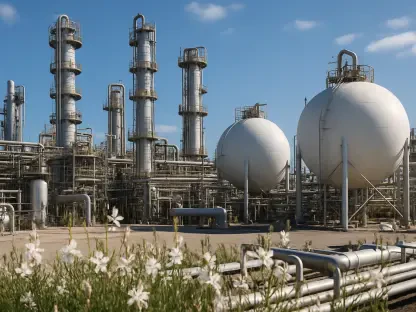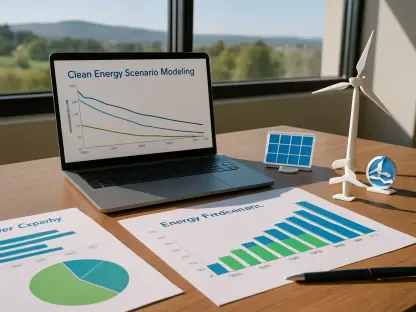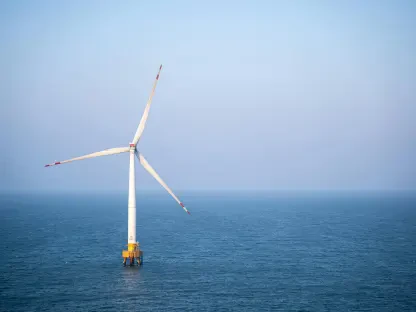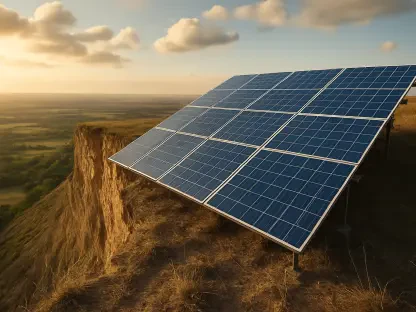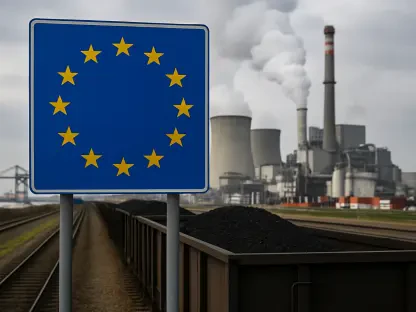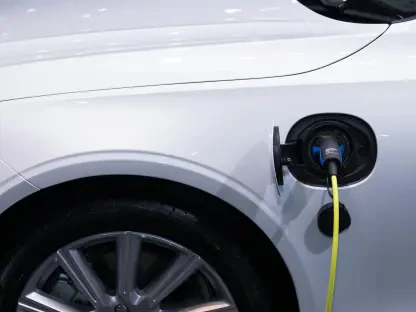Kentucky is experiencing an era of unprecedented economic growth, largely driven by the booming presence of data centers and other technological advancements. The Louisville Gas and Electric Company (LG&E) and Kentucky Utilities Company (KU) recognize the pressing need to meet increasing energy demands while adhering to environmental regulations. In their Integrated Resource Plan (IRP) filed with the Kentucky Public Service Commission (KPSC), LG&E and KU outline a multi-faceted approach to ensure reliable and sustainable power for the future.
Anticipated Economic Growth and Energy Demand
Surge in Data Centers
The heart of Kentucky’s economic expansion is the influx of data centers. These high-tech facilities are known for their substantial energy consumption, placing significant demands on the state’s power infrastructure. The IRP projects a notable increase in energy usage, expecting a system load growth ranging from 30% to 45% by 2032. This is a stark contrast to the relatively modest reductions achieved through energy efficiency and customer-installed solar systems, which are expected to curb load by more than 3.5% within the same period. Data centers, often deemed the backbone of the digital economy, require immense power for their computing and storage needs, which has catapulted utilities like LG&E and KU into a critical juncture.
David Sinclair, Vice President of Energy Supply and Analysis at LG&E and KU, underscores the inherent uncertainties in long-term planning. Despite these uncertainties, he expresses confidence that their current IRP presents a robust and cost-effective path forward based on existing data. This increased energy demand necessitates an integrated approach to power planning that not only meets current requirements but also anticipates future trends. As the digital economy continues to thrive, the energy demands from data centers will inevitably exert pressure on Kentucky’s energy grid, compelling LG&E and KU to continually adapt and expand their resource strategies.
Energy Efficiency Measures
Despite the looming surge in energy demand, LG&E and KU remain committed to promoting energy efficiency. The companies have implemented various programs and incentives aimed at reducing electricity consumption among residential and commercial customers. These initiatives include rebates for energy-efficient appliances, educational programs to promote conservation, and strategies to optimize the energy use of commercial facilities. By encouraging customers to adopt energy-saving behaviors and technologies, LG&E and KU are making concerted efforts to mitigate some of the anticipated load growth.
Although these energy efficiency measures are crucial, they alone will not suffice to meet the projected demands driven by economic and technological advancements. This underscores the importance of a balanced approach that combines energy efficiency with strategic investments in additional power generation. While these measures may result in a 3.5% reduction in load by 2032, they serve more as a complementary effort rather than a solution to the overall increase in energy demand due to the influx of data centers. Thus, LG&E and KU’s IRP emphasizes not only the promotion of efficiency but also the expansion of energy infrastructure to ensure sustainable growth.
Strategic Investments in Power Generation
New Natural Gas Units
A significant component of the IRP is the construction of two new natural gas combined-cycle generation units, scheduled for 2030 and 2031. These units are expected to provide a reliable and stable source of power, essential for accommodating the increased load from data centers and other economic activities. Natural gas offers a cleaner alternative to coal and is seen as a bridge fuel in the transition towards more sustainable energy sources. The choice of natural gas is not only due to its comparatively lower emissions but also its ability to deliver consistent power output, vital for maintaining grid stability during peak loads.
The new natural gas units represent a pivotal aspect of Kentucky’s energy transition strategy. By incorporating advanced combined-cycle technology, these units will achieve higher thermal efficiency, further reducing their environmental impact. In this light, LG&E and KU are navigating the delicate balance of meeting immediate power needs while laying the groundwork for greener alternatives in the future. As part of this transition, the planned natural gas units signify a critical step in ensuring Kentucky’s energy grid remains resilient amidst rising demand.
Enhancements in Battery Storage and Solar Energy
In addition to natural gas, the IRP emphasizes substantial investments in battery storage and solar energy. By 2028, LG&E and KU plan to install 400 MW of battery storage, with further expansions leading to an additional 500 MW of battery storage and 500 MW of solar power by 2035. These investments will enhance grid reliability and facilitate the integration of renewable energy sources, aligning with environmental goals and customer preferences. Battery storage plays a critical role in accommodating the intermittent nature of solar energy, ensuring that power supply remains stable even when solar generation is low.
The IRP’s focus on solar energy highlights a commitment to harnessing renewable sources for long-term sustainability. The phased approach aims to first install 200 MW of solar capacity by 2028, with incremental expansions reaching up to 1,000 MW by 2032. This strategy not only meets customer demand for green energy but also aligns with broader environmental goals, showcasing Kentucky’s proactive stance on renewable energy adoption. As technology and market dynamics evolve, these investments will position LG&E and KU to adapt to the changing energy landscape effectively.
Infrastructure Upgrades and Environmental Compliance
Ghent and Trimble County Generating Stations
To ensure continued operation and compliance with environmental regulations, LG&E and KU have outlined necessary upgrades to their existing facilities. The Ghent Generating Station will see the addition of selective catalytic reduction technology at Unit 2 by 2028, enhancing its efficiency and reducing emissions. Similar improvements are planned for the Trimble County Generating Station, ensuring that these facilities remain viable and environmentally friendly power sources. These upgrades are pivotal in extending the operational life and environmental compliance of these plants, thereby supporting Kentucky’s broader environmental objectives.
Implementing advanced emission control technologies at these generating stations reflects LG&E and KU’s commitment to cleaner energy production. The selective catalytic reduction technology will significantly reduce nitrogen oxide emissions, contributing to improved air quality and public health. These enhancements not only ensure compliance with stringent environmental regulations but also demonstrate a proactive approach to environmental stewardship. By investing in such upgrades, LG&E and KU are positioning their legacy infrastructure to meet current and future environmental standards.
Retirement of Older Coal Units
As part of the transition towards cleaner energy, the IRP includes the retirement of several older coal units. Mill Creek Generating Station Units 3 and 4 and E.W. Brown Generating Station Unit 3 are projected to retire by 2035. This move reflects the ongoing shift away from coal in favor of more sustainable energy sources, a necessary step in reducing the state’s carbon footprint. The phasing out of these older units underscores Kentucky’s commitment to embracing cleaner energy solutions and mitigating the environmental impact of its energy sector.
Retiring these units will open opportunities for additional investments in renewable energy and advanced technologies. These transitions are not merely about decommissioning old infrastructure but also about paving the way for a modern, sustainable energy grid. By prioritizing the retirement of less efficient coal units, LG&E and KU are aligning with global trends of reducing reliance on fossil fuels and investing in cleaner technologies. This strategic move ensures that Kentucky’s energy policies are forward-thinking and environmentally responsible.
Addressing Data Center Customer Needs
Enhanced Solar Plan
Given the aggressive carbon reduction goals of many data center customers, the IRP incorporates an enhanced solar plan. This plan is contingent on customer requests or changes in the economics of solar energy. It outlines the initial installation of 200 MW of solar capacity by 2028, with incremental expansions reaching up to 1,000 MW by 2032. This approach ensures that LG&E and KU are well-positioned to meet the evolving needs of their customers while advancing towards a sustainable energy future. This forward-looking strategy is designed to accommodate changing market dynamics and customer preferences, thus facilitating a smooth transition to a greener energy portfolio.
The enhanced solar plan exemplifies a customer-centric approach in LG&E and KU’s energy planning. By responding to the specific carbon reduction goals of data center customers, the plan not only meets energy needs but also aligns with broader sustainability objectives. Data centers, which are increasingly prioritizing carbon neutrality, will benefit from access to clean energy sources, reinforcing Kentucky’s attractiveness as a hub for high-tech industries. The phased implementation schedule allows for flexibility and scalability, enabling LG&E and KU to adapt to evolving technological and market trends.
Collaborations with Technology Providers
To further address the unique energy demands of data centers, LG&E and KU are exploring collaborations with leading technology companies. Examples across the nation show that partnerships with firms like Amazon, Google, and Microsoft can help utilities develop tailored energy solutions. These collaborations focus on aligning energy supply strategies with the long-term sustainability goals of data center operators, ensuring a mutually beneficial approach to power generation and consumption. By leveraging the expertise and resources of these technology giants, LG&E and KU can optimize their energy strategies and innovate in ways that cater to the specific needs of data-intensive industries.
Collaborations with technology providers represent a synergistic approach to energy planning. By engaging with these industry leaders, LG&E and KU can explore innovative solutions such as demand response programs, customized tariff structures, and co-investments in renewable energy projects. These coordinated efforts not only enhance the reliability and sustainability of the energy grid but also support the broader economic goals of attracting and retaining data centers in Kentucky. Such partnerships highlight the progressive stance of LG&E and KU in integrating customer needs with cutting-edge technological advancements in the energy sector.
Nationwide Trends and Challenges
Growing Electricity Consumption by Data Centers
The dramatic rise in electricity consumption by data centers is not unique to Kentucky. According to a study by the Electric Power Research Institute (EPRI), data centers could consume up to 9% of U.S. electricity generation by 2030. Coupled with projections from McKinsey & Company estimating that U.S. data center demand will surge from 17 GW in 2022 to 35 GW by 2030, the urgency for utilities to expand their generation capabilities is clear. These growth trends necessitate significant investments in infrastructure and innovative planning to ensure that power supply keeps pace with burgeoning demand.
In light of these projections, utilities nationwide are faced with the challenge of balancing supply reliability with environmental responsibility. The increasing power needs of data centers highlight the importance of diversified energy portfolios that integrate renewable sources and advanced storage solutions. For LG&E and KU, addressing this surge involves not only strategic investments in new power generation but also fostering collaborations and adopting industry best practices to manage the evolving energy landscape effectively. This comprehensive approach underscores the critical role of proactive planning in sustaining economic and digital growth.
Navigating Regulatory Landscapes
Kentucky is experiencing an era of remarkable economic growth, fueled primarily by the flourishing presence of data centers and other technological advancements. The Louisville Gas and Electric Company (LG&E) and Kentucky Utilities Company (KU) are well aware of the urgent need to meet rising energy demands while remaining compliant with environmental regulations. To address these challenges proactively, LG&E and KU have submitted their Integrated Resource Plan (IRP) to the Kentucky Public Service Commission (KPSC). This comprehensive plan lays out a strategic, multi-faceted approach designed to ensure a reliable and sustainable energy supply for the future. By leveraging a mix of existing and innovative solutions, the plan aims to balance the growing energy requirements with environmental responsibility. They also consider incorporating renewable energy sources, enhancing energy efficiency measures, and exploring modern technologies to optimize grid performance. In doing so, LG&E and KU aim to deliver both economic growth and environmental stewardship, ensuring a balanced and prosperous future for Kentucky.


